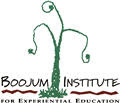We know that bees and flowers are symbiotic. Almost any garden will attract and nourish honeybees. Does your school have a garden? Do you have a garden at home? This is the time of year to plan next year’s garden and prepare the soil for Spring planting!
Whether you already have a garden or are planning to have one, consider a Honeybee Garden. You can plan a whole garden to help your local native and honey bees thrive, or devote a part of your garden to plants that bees love. You can pick native plants and flowers that will thrive in your area and require very little water and maintenance.
1) What can you do now, in the winter, for your garden this spring?
Winter is for soil preparation and planning. Spread compost and till it into the soil often. Turning the soil aerates and helps keep weeds sparse. If you do not already compost all or part of your garbage, consider it. Compost provides an organic and well-balanced fertilizer that can be used all year.
After the fall harvest and while the earth recovers for spring planting, plan your garden. Which plants have you decided you’d like and where will they go?
2) Define xeriscaping.
Xeriscaping refers to landscaping while reducing or eliminating supplemental irrigation. "Xeri" comes from Greek meaning “dry”. Using native plants is and excellent way to xeriscape or xerigarden. Once established, native plants take very little to no water beyond what they get from the local weather.
Xeriscaping refers to landscaping while reducing or eliminating supplemental irrigation. "Xeri" comes from Greek meaning “dry”. Using native plants is and excellent way to xeriscape or xerigarden. Once established, native plants take very little to no water beyond what they get from the local weather.
3) What are some native plants to your area that will attract and feed honeybees? Can you find any interesting facts about some of those plants?
We are located in a chaparral plant community here at the Boojum Institute, in the mountains of southern California. Adjacent plant communities are coastal sage scrub and pinyon-juniper woodland. The Boojum Bees feast on several native plant species. White Sage and California Buckwheat are two of the main local suppliers of sustenance to our bee colonies.
White Sage, Salvia apiana, is also called grandfather sage and bee sage. The bees make an especially delightful honey from the nectar of this plant’s delicate flowers. This is one of the sacred plants to the indigenous people. They burn the leaves as a type of incense to purify the air. Tribal hunters rubbed the leaves on themselves to mask their own smell from animals. The leaves are anti-septic and anti-fungal among a long list of other properties.
 |
| photo: Robyn Young |
 |
| photo: Robyn Young |
California Buckwheat, Eriogonum fasciculatum, is also very popular for bees. The multi-flowered umbels provide a heavy load of nutrients for bees. They bloom from summer into late fall, their flower heads like white cotton balls in the bushes along the road. As the bloom ages it turns pink and finally to a rich, rusty red brown. It was used medicinally by indigenous people for headache, wound treatment, and heart problems. Bees make a rich, robust honey from Buckwheat that is especially nutrient dense.
 |
| photo: Stan Shebs |








No comments:
Post a Comment